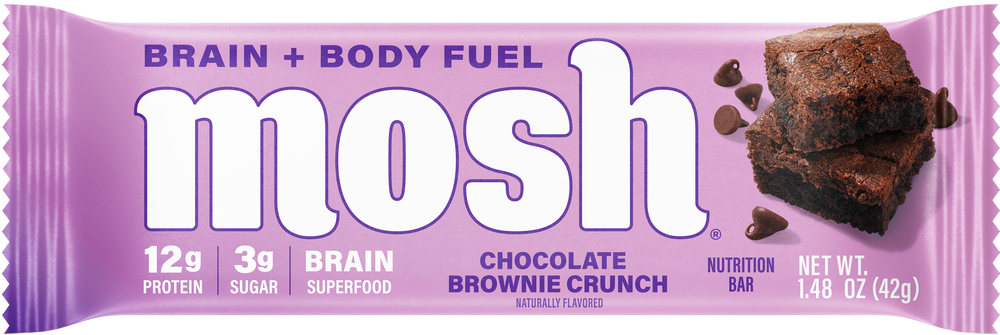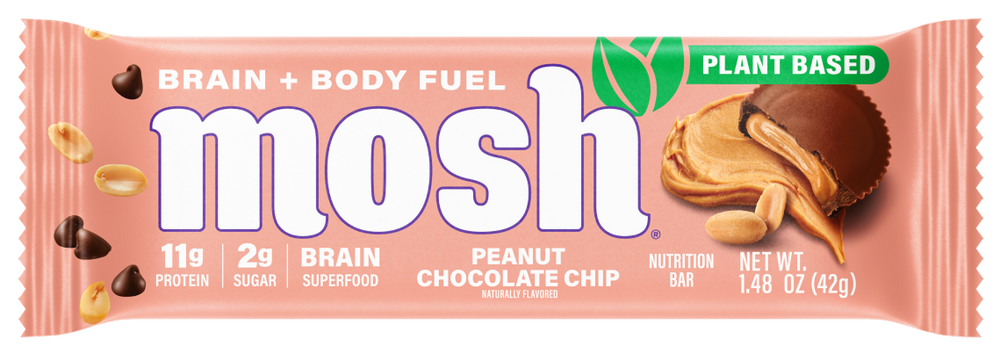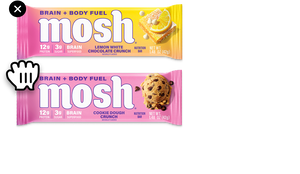You probably learned at a very young age that food provides us with essential nutrients and energy. After you eat something, your body mixes it with various fluids, acids, and enzymes in your stomach. The food breaks down into different vitamins, minerals, and molecules used throughout your body.
Everything you eat has a unique chemical composition and contains various essential nutrients. If you eat “good” foods, then these nutrients could promote certain benefits in your brain and body. If you eat “bad” foods, the ingredients could result in negative side effects from feeling a little tired to just plain feeling bad.
Finding the time to prepare healthy foods can be difficult in the busy modern world. Preparing delicious and nutritious foods can be time-consuming and challenging to maintain while working, attending school, or raising children.
The good news is there’s an easy solution to your dilemma: protein bars. But with the seemingly infinite number of options available at grocery stores, wellness shops, and even gas stations, how can you know which protein bar actually has the good stuff?
What Is a Protein Bar, Anyway?
Protein bars are nutritional snacks that typically contain a high protein ratio to carbohydrates and fats. The protein found in most protein bars is usually a combination of plant-based protein such as soy concentrates and isolates, and animal-based protein such as whey protein concentrations and isolates.
Naturally, protein is the primary ingredient in any given protein bar. However, each will come with a long list of additional vitamins, minerals, and other nutrients. A protein bar's exact nutrients and flavors can vary significantly depending on a few factors. Each protein bar brand will come with its unique formula to differentiate itself from the competition.
The major differences will come from the intended purpose of the protein. Some protein bars aim to help support muscle building, others claim to help fuel you through your workout, and some are even intended to serve as meal replacements.
For example, each of our MOSH bars is made with vitamin B12, lion’s mane, MCT oil, omega-3s, collagen, vitamin D3, and ashwagandha (to name a few!).
These superfoods are in every MOSH bar because of their ability to support brain health. They’ve been intentionally selected by brain experts to ensure you get the protein to support your workout recovery or crush cravings while giving you nourishing nutrients that fuel your brain.
What Should You Look for in a Protein Bar?
Finding a protein bar isn’t very difficult. Like we mentioned earlier, protein bars are everywhere — in gas stations, grocery stores, pharmacies, supplement stores, and online. The challenging part is finding a protein bar that fits your needs.
When searching for your new protein bar of choice, here are six things to keep in mind:
1. High Protein Quality
Pretty much every protein bar that you try is going to be loaded with protein. After all, it’s right in the name and the most important ingredient.
Generally, most people will opt for a protein bar with the highest protein content. The problem is that having a higher protein content isn’t going to matter if the protein is low quality.
The best types of protein that you can find in a protein bar are whey protein isolate and milk protein concentrates. These proteins are isolated from cow’s milk fluid by membrane processing and eventually spray dried into a powder.
Vegans will have a difficult time meeting the quality of these animal-based proteins. There are plenty of bars that feature soy, nuts, peas, or seeds of protein, but they don’t tend to be as potent of a protein as dairy products.
2. No Added Sugar
There are several reasons why food manufacturers commonly add sugar to their products. The most obvious is that adding sugar can help to improve the taste.
Sugar has specific interactions with other common ingredients and can enhance or suppress their flavor. Sugar can also go as far as to help influence the coloring, texture, fermentation, and preservation of the product.
It’s no secret that eating excessive sugar isn’t great for your overall health and wellness. Sugar is high in calories and can raise your triglyceride levels, increase the risks of developing type 2 diabetes, and cause cavities and tooth decay.
Ideally, you should look for a protein bar with no added sugar — the less sugar, the better, especially added sugar.
3. Lower Carb Content
Carbohydrates are essential to your overall health and serve many purposes within your body. It could be unhealthy and dangerous to try eliminating all carbs from your diet. However, be careful not to overindulge in carbs as it can have negative effects.
After you eat carbs, your body breaks them down into glucose and uses them as an energy source. The excess glucose is stored for later in the liver, muscles, or fat.
As a result, this can have a negative and undesired effect on your waistline. Overeating carbs can also lead to excess cravings that may push you to consume more snacks.
Unless your goal is to gain weight by eating protein bars, looking for one low on carbs may be a good idea. An ideal carb content of a protein bar is typically 20 grams or less.
4. Total Calories
Knowing the total number of calories in the food you eat is a good habit. The number of calories you need daily will depend on a few factors.
Your sex, age, and physical activity level will influence the ideal number of daily calories. Adult women generally need between 1,600 and 2,400 calories daily, and men need between 2,000 and 3,000.
Finding a protein bar that’s “low-calorie” can be pretty difficult. Each gram of protein contains about four calories. The more protein in your protein bar, the more calories it will have.
That’s why looking for bars with low (or no) added sugars and limited fat content is important. To limit your daily calories, you should look for a bar that only contains between 140 and 200 calories per serving.
5. Healthy Fats
Fat has something of a bad reputation for most of the public. Some types of fat are unhealthy for you, but others are highly nutritious and essential for bodily functions.
The important thing is knowing which types are which:
- Saturated fats and trans fat are the “bad” types of fat and come with little to no nutritional value. Overeating these fats can lead to elevated cholesterol levels in your arteries.
- Monounsaturated and polyunsaturated fats are the “good” type of fat, and you can generally eat more of them. These fats can provide clean energy, help your body absorb essential nutrients, support natural cellular growth, and insulate your organs.
You won’t be able to find a protein bar that contains zero grams of saturated fat. There isn’t a lot of saturated fat in protein, but there is some. Ideally, it’s best to look for bars that are low in saturated fat and have no trans fats.
Another thing worth looking out for is what other fats they include. Healthy fats such as omega-3s and omega-6s can help to fuel you instead of slowing you down.
6. Higher Fiber
Dietary fiber plays an important role in your digestive system and helps support several key processes. Fiber helps increase the size of your stool and softens it, helping it pass as it should. It also supports a healthy sugar absorption rate into your bloodstream, maintains regularity, and helps you feel full after meals.
Fortunately, fiber and protein work very well together and often come in the same foods. Increasing your protein and fiber intake can play a great role in workout recovery and supplying your body with steady energy. The good news is that finding a protein bar with a lot of fiber isn’t going to be particularly difficult.
The only thing that you’ll need to keep in mind is that fiber is a type of carbohydrate. The more fiber inside your protein bar, the higher the carb content will be. However, the extra carbs can be worth it if they’re coming from quality fiber. Try to look for protein bars with at least four grams of fiber.
Get a Protein Bar That Meets All Your Demands
Unfortunately, a lot of protein bars are little more than mislabeled candy bars. If you want a protein bar that meets all six of the criteria listed above, you won’t have to look far.
Each MOSH protein bar is specifically crafted with ingredients for the specific purpose of supporting brain health.
Order a trial pack to see for yourself and prepare to have your mind blown!
Sources:
High-Protein Bar as a Meal Replacement in Elite Sports Nutrition: A Pilot Study | PMC
How Does the Food We Eat Actually Give Us Energy? | livestrong
Carbohydrates and Fiber - Recommended Dietary Allowances | NCBI Bookshelf
Rough Up Your Diet | News in Health
The Importance of the Ratio of Omega-6/Omega-3 Essential Fatty Acids | NCBI Bookshelf
The Truth About Fats: the Good, the Bad, and the In-Between | Harvard Health
Fat and Calories: The Difference & Recommended Intake | Cleveland Clinic
New Gene Found That Turns Carbs Into Fat, Could be Target for Future Drugs | Berkeley News
Five Reasons why Sugar is Added to Food | ScienceDaily


























